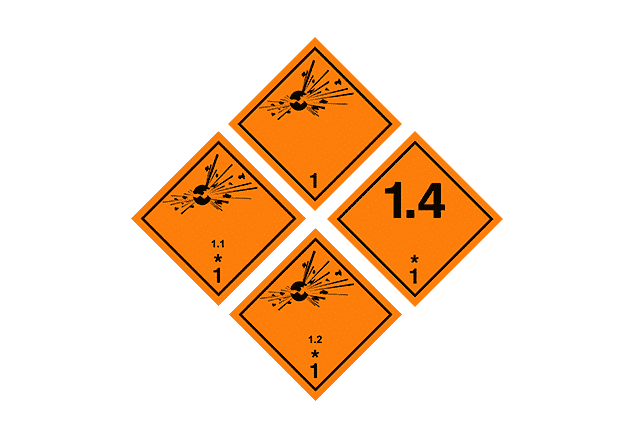2 Start Training are members of the National Dangerous Goods Training Consortium (NDGTC), who are a nationwide ADR accrediting body. They ensure that all courses conducted by approved NDGTC training providers are providing high standards. This includes training that meet the standards set by them.
In 2007, it became mandatory for all drivers of vehicles carrying dangerous goods to be trained by approved training providers.
ADR, also known as the “European Agreement Concerning the International Carriage of Dangerous Goods by Road” sets the legal framework for the transport of dangerous goods by road in Europe.
The process to receive the certification to carry dangerous goods requires the student to complete relevant training, as well as passing an examination.
ADR class 1 covers explosives. You can learn this class via one of our individual ADR courses. Or, you can learn this as part of a full ADR packaged course. All drivers carrying explosives require specialist training.
Explosives are substances or articles that can undergo a rapid chemical reaction. They produce a large amount of gas and heat when subjected to any of the following:
- Heat
- Friction
- Shock
- Impact
Any of these conditions result in a sudden increase in pressure.

Explosives are divided into six divisions (1.1, 1.2, 1.3, 1.4, 1.5, and 1.6) based on their hazard level, with division 1.1 being the most dangerous and division 1.6 being the least dangerous.
Division 1.1
Substances and articles which are a mass explosion hazard. These explosives can cause an explosion capable of propagating through the entire load almost instantaneously.
Division 1.2
Explosives with a projection hazard but not a mass explosion hazard. These explosives can cause a blast, but the blast is limited to the immediate vicinity of the explosion.
Division 1.3
Substances and articles which have a fire hazard and either a minor blast hazard or a minor projection hazard or both, but not a mass explosion hazard. These explosives can cause a fire, but the fire is limited to the immediate vicinity of the explosion.
Division 1.4
Explosives with no significant hazard. These explosives have a minor explosive hazard and a minor fire hazard and pose a low risk during transport.
Division 1.5
Very insensitive explosives with a mass explosion hazard. These explosives are relatively insensitive and require a strong stimulus to cause an explosion.
Division 1.6
Extremely insensitive articles. These articles pose almost no risk during transport and are so insensitive that they do not need to be classified as explosives.
Transporting explosives requires special precautions and regulations to ensure safety. ADR specifies the packaging, labelling, and transport requirements for each division of explosives. It also outlines the responsibilities of the carrier and the consignor and provides guidance on emergency response procedures.
Our Reading instructor, Clint Steggles has recently passed his ADR Class 1 Instructors examination. He can now provide students with ADR Class 1 training at the same NDGTC standards all our ADR courses meet.
We’re glad to see his success and hope that he continues building his knowledge to become certified in all Classes.
Well done, Clint!



Leave a Reply